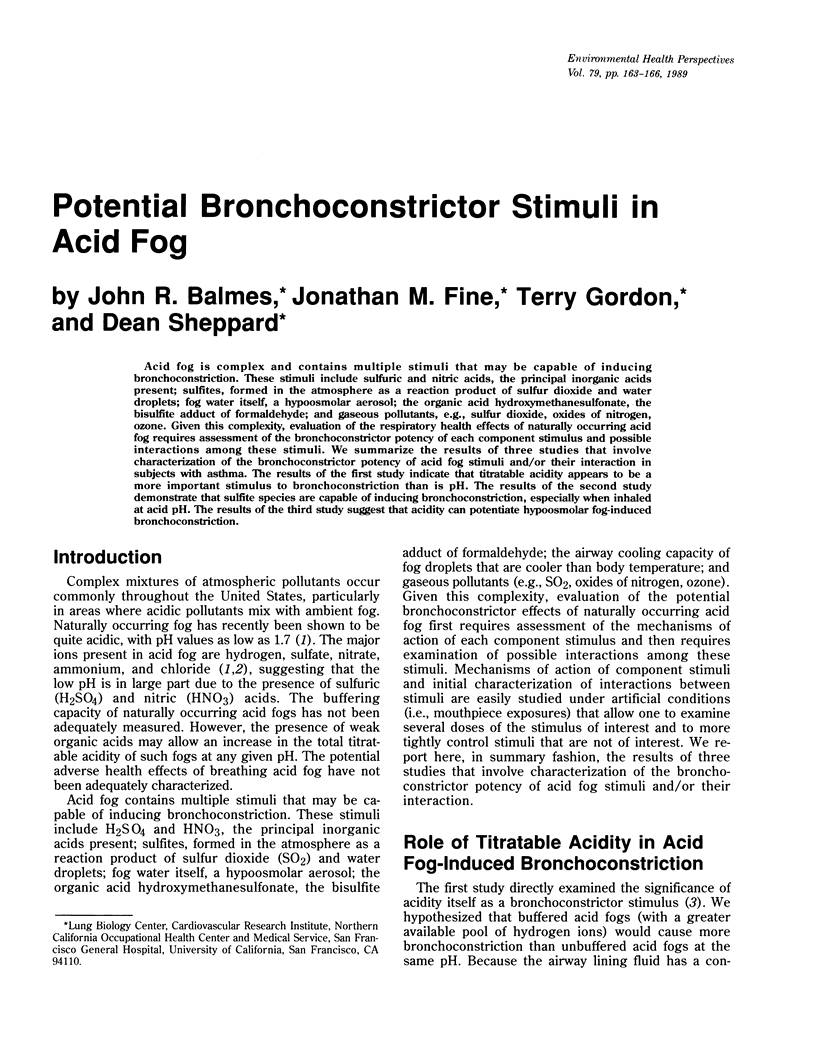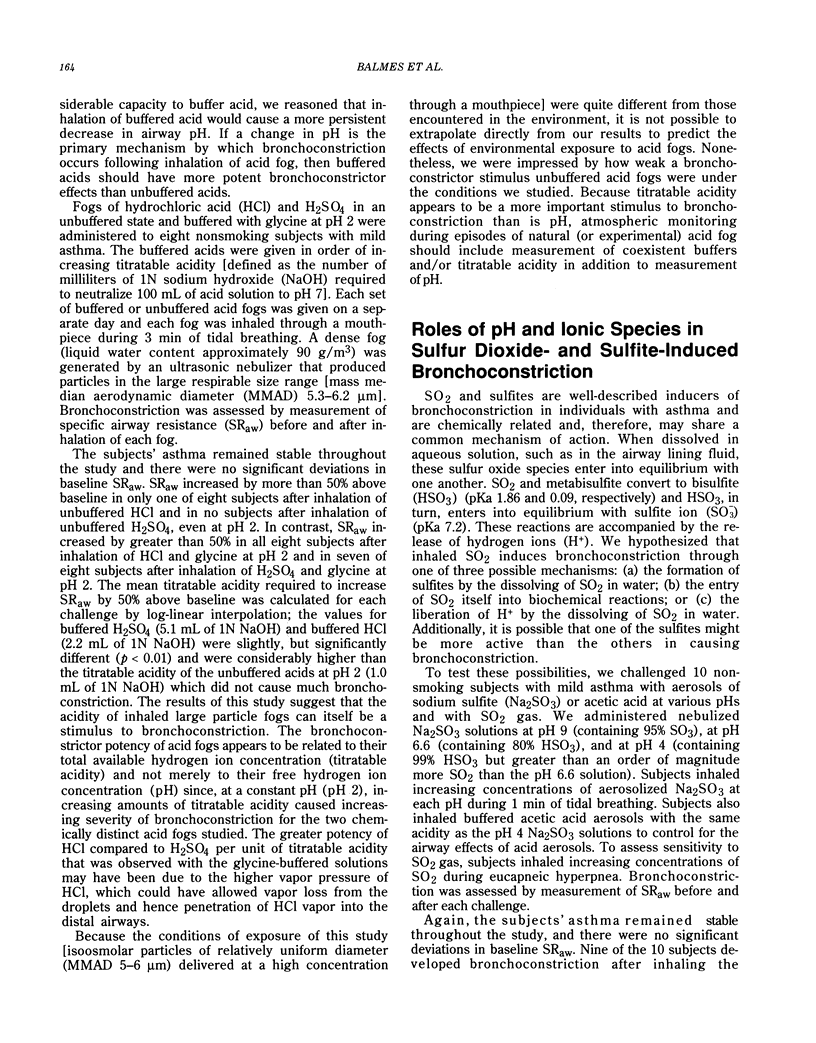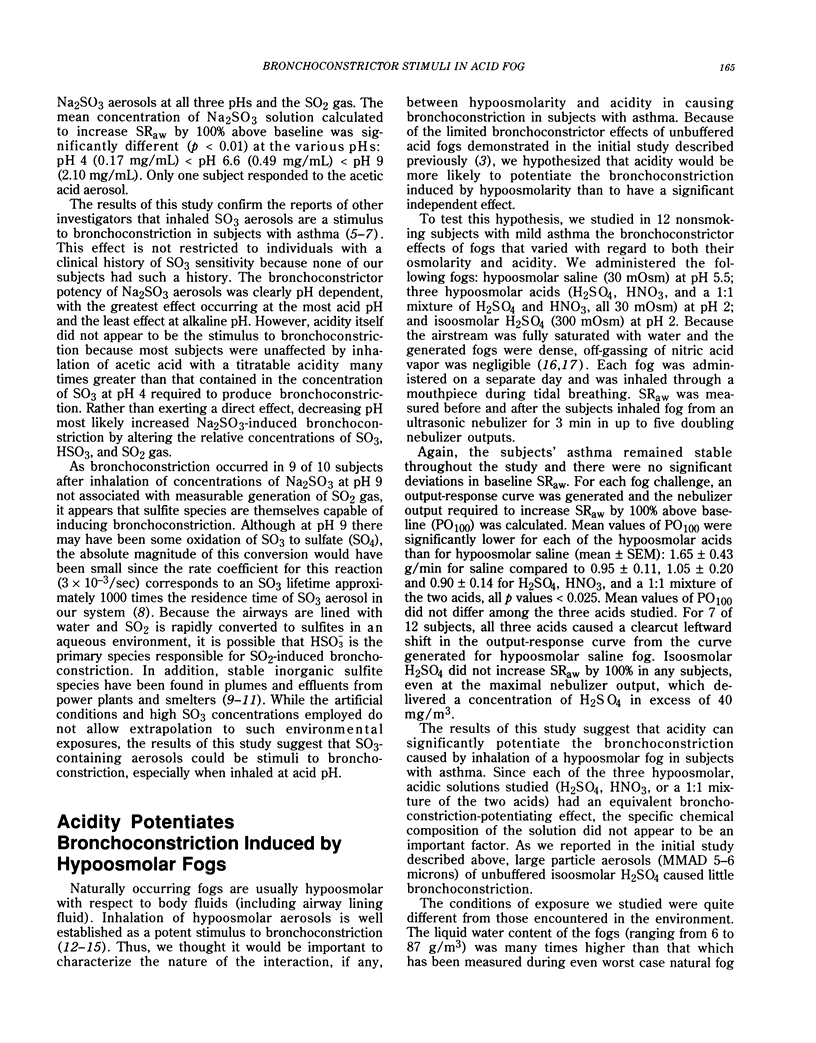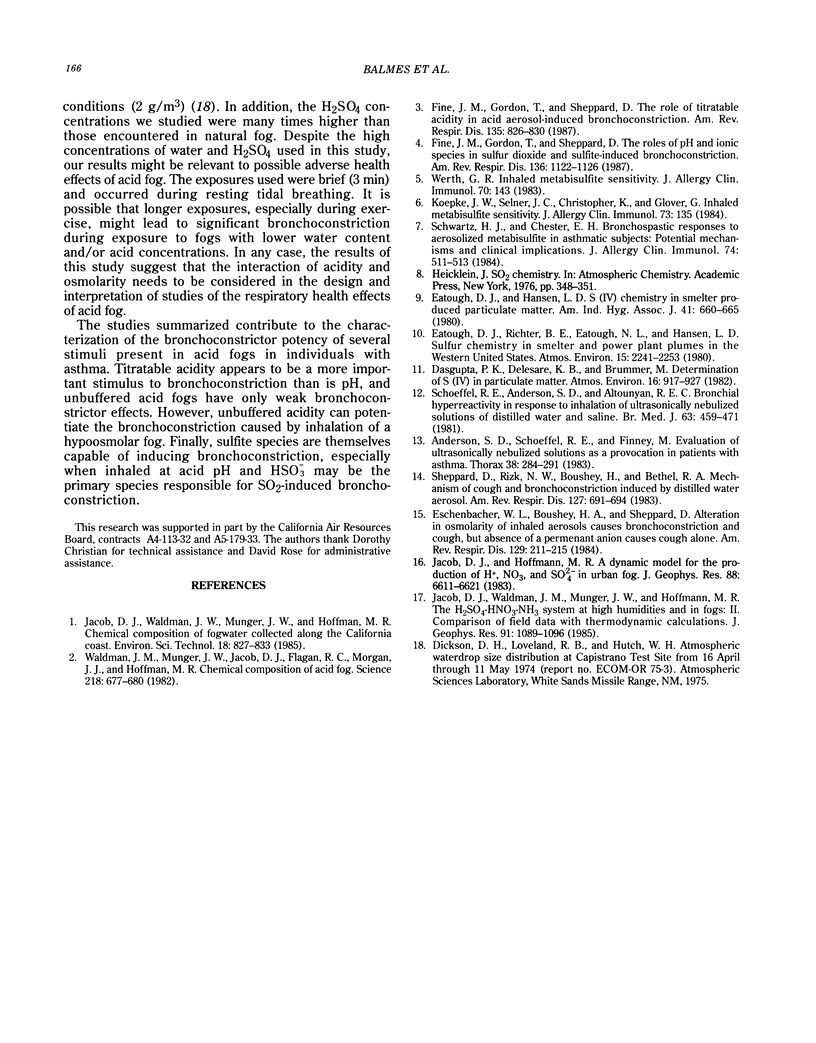Abstract
Acid fog is complex and contains multiple stimuli that may be capable of inducing bronchoconstriction. These stimuli include sulfuric and niric acids, the principal inorganic acids present; sulfites, formed in the atmosphere as a reaction product of sulfur dioxide and water droplets; fog water itself, a hypoosmolar aerosol; the organic acid hydroxymethanesulfonate, the bisulfite adduct of formaldehyde; and gaseous pollutants, e.g., sulfur dioxide, oxides of nitrogen, ozone. Given this complexity, evaluation of the respiratory health effects of naturally occurring acid fog requires assessment of the bronchoconstrictor potency of each component stimulus and possible interactions among these stimuli. We summarize the results of three studies that involve characterization of the bronchoconstrictor potency of acid fog stimuli and/or their interaction in subjects with asthma. The results of the first study indicate that titratable acidity appears to be a more important stimulus to bronchoconstriction than is pH. The results of the second study demonstrate that sulfite species are capable of inducing bronchoconstriction, especially when inhaled at acid pH. The results of the third study suggest that acidity can potentiate hypoosmolar fog-induced bronchoconstriction.
Full text
PDF



Selected References
These references are in PubMed. This may not be the complete list of references from this article.
- Anderson S. D., Schoeffel R. E., Finney M. Evaluation of ultrasonically nebulised solutions for provocation testing in patients with asthma. Thorax. 1983 Apr;38(4):284–291. doi: 10.1136/thx.38.4.284. [DOI] [PMC free article] [PubMed] [Google Scholar]
- Dasgupta P. K., Raabe O. G., Duvall T. R., Tarkington B. K. Generatation and characterization of sodium sulfite aerosols for applications in inhalation toxicologic research. Am Ind Hyg Assoc J. 1980 Sep;41(9):660–665. doi: 10.1080/15298668091425464. [DOI] [PubMed] [Google Scholar]
- Eschenbacher W. L., Boushey H. A., Sheppard D. Alteration in osmolarity of inhaled aerosols cause bronchoconstriction and cough, but absence of a permeant anion causes cough alone. Am Rev Respir Dis. 1984 Feb;129(2):211–215. [PubMed] [Google Scholar]
- Fine J. M., Gordon T., Sheppard D. The roles of pH and ionic species in sulfur dioxide- and sulfite-induced bronchoconstriction. Am Rev Respir Dis. 1987 Nov;136(5):1122–1126. doi: 10.1164/ajrccm/136.5.1122. [DOI] [PubMed] [Google Scholar]
- Fine J. M., Gordon T., Thompson J. E., Sheppard D. The role of titratable acidity in acid aerosol-induced bronchoconstriction. Am Rev Respir Dis. 1987 Apr;135(4):826–830. doi: 10.1164/arrd.1987.135.4.826. [DOI] [PubMed] [Google Scholar]
- Schwartz H. J., Chester E. H. Bronchospastic responses to aerosolized metabisulfite in asthmatic subjects: potential mechanisms and clinical implications. J Allergy Clin Immunol. 1984 Oct;74(4 Pt 1):511–513. doi: 10.1016/0091-6749(84)90387-7. [DOI] [PubMed] [Google Scholar]
- Sheppard D., Rizk N. W., Boushey H. A., Bethel R. A. Mechanism of cough and bronchoconstriction induced by distilled water aerosol. Am Rev Respir Dis. 1983 Jun;127(6):691–694. doi: 10.1164/arrd.1983.127.6.691. [DOI] [PubMed] [Google Scholar]
- Waldman J. M., Munger J. W., Jacob D. J., Flagan R. C., Morgan J. J., Hoffmann M. R. Chemical composition of Acid fog. Science. 1982 Nov 12;218(4573):677–680. doi: 10.1126/science.218.4573.677. [DOI] [PubMed] [Google Scholar]
- Werth G. R. Inhaled metabisulfite sensitivity. J Allergy Clin Immunol. 1982 Aug;70(2):143–143. doi: 10.1016/0091-6749(82)90243-3. [DOI] [PubMed] [Google Scholar]


